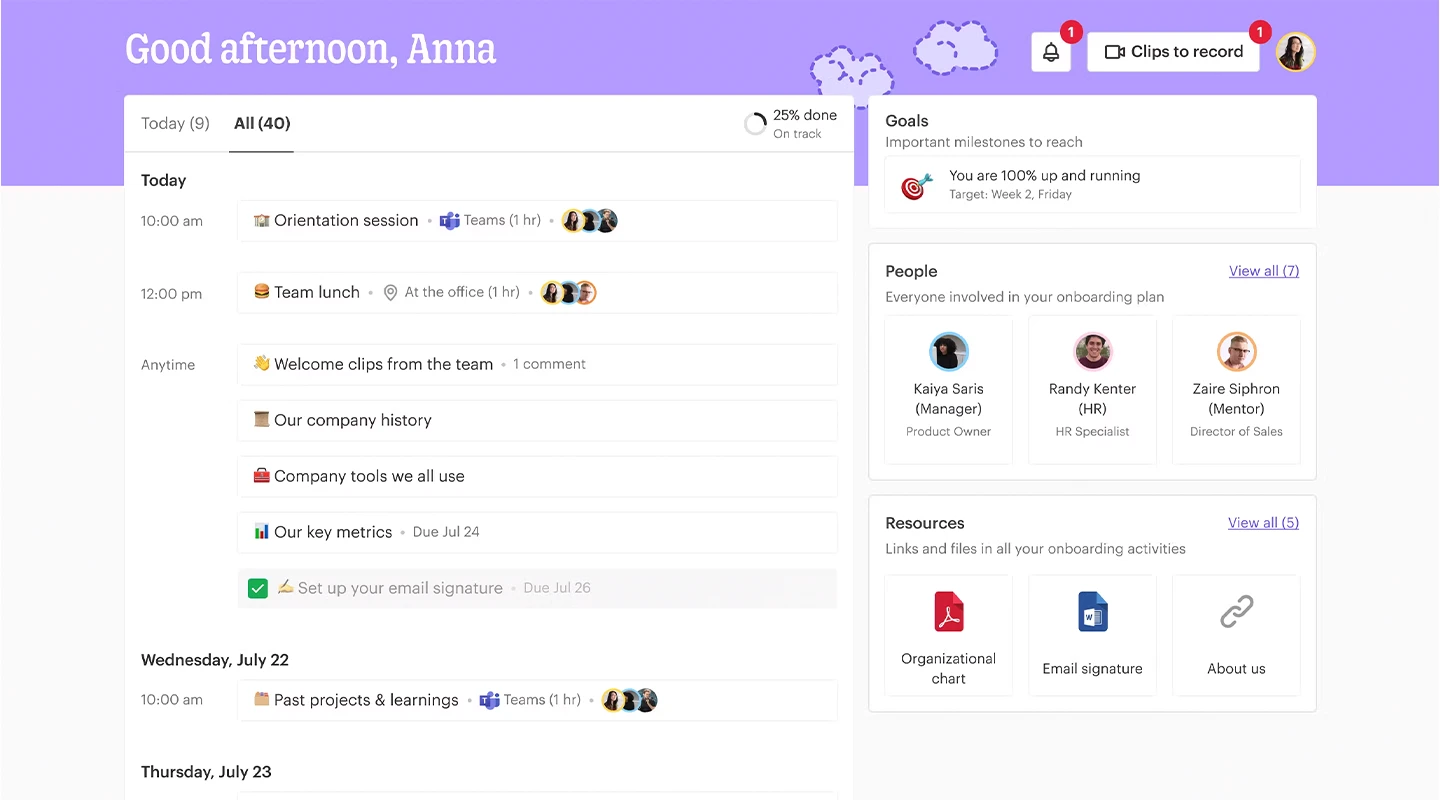15+ Top Employee Feedback Tools and Apps for 2024
Read Time: 14 minutes
Posted on March 8, 2024

The ability to give and receive feedback is a cornerstone of professional development and organizational growth. As we navigate through the complexities of team dynamics and strive to enhance productivity, the role of effective employee feedback cannot be overstressed. This is where employee feedback tools step in, transforming the way we understand and improve our work environments.
In this article, we’ll cover the best employee feedback tools.
What Is Employee Feedback?
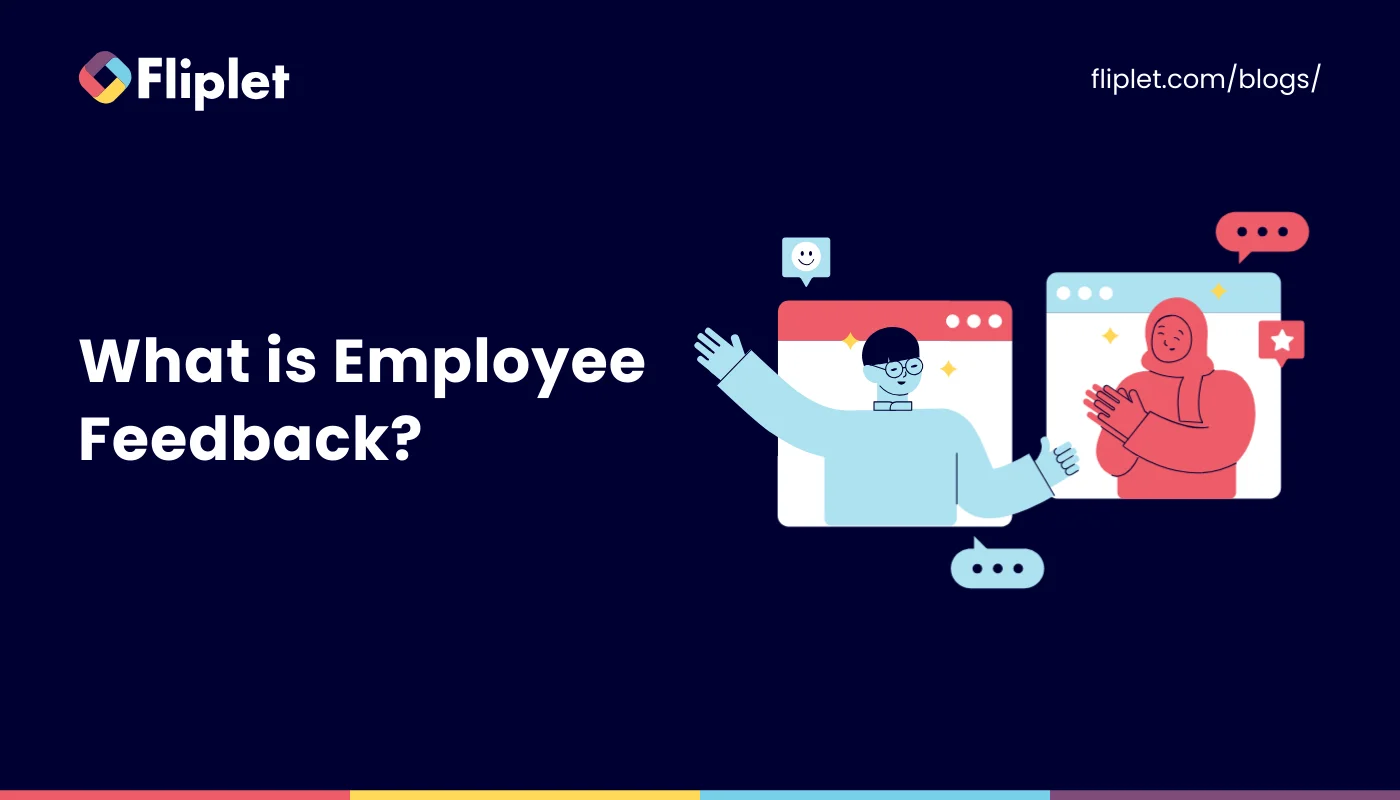
Employee feedback is the information and opinions shared regarding an individual’s performance, behavior, and expectations within the workplace.
It’s a two-way street that, when navigated correctly, can significantly improve job satisfaction, performance, and the overall employee experience. It’s just as important to get employee feedback as it is to give feedback to employees.
But what makes feedback in the workplace so crucial? Simply put, it bridges the gap between expectation and reality, providing a clear path for personal and professional development.
Does employee feedback improve employee experience?
The short answer is, absolutely. A well-structured feedback process offers employees the insights they need to excel, fostering a culture of continuous improvement and open communication.
Studies have shown that organizations that prioritize feedback see higher levels of engagement and performance. This connection between feedback and employee experience underscores the importance of having effective channels for sharing and receiving feedback.
What Types of Employee Feedback Can Be Collected?
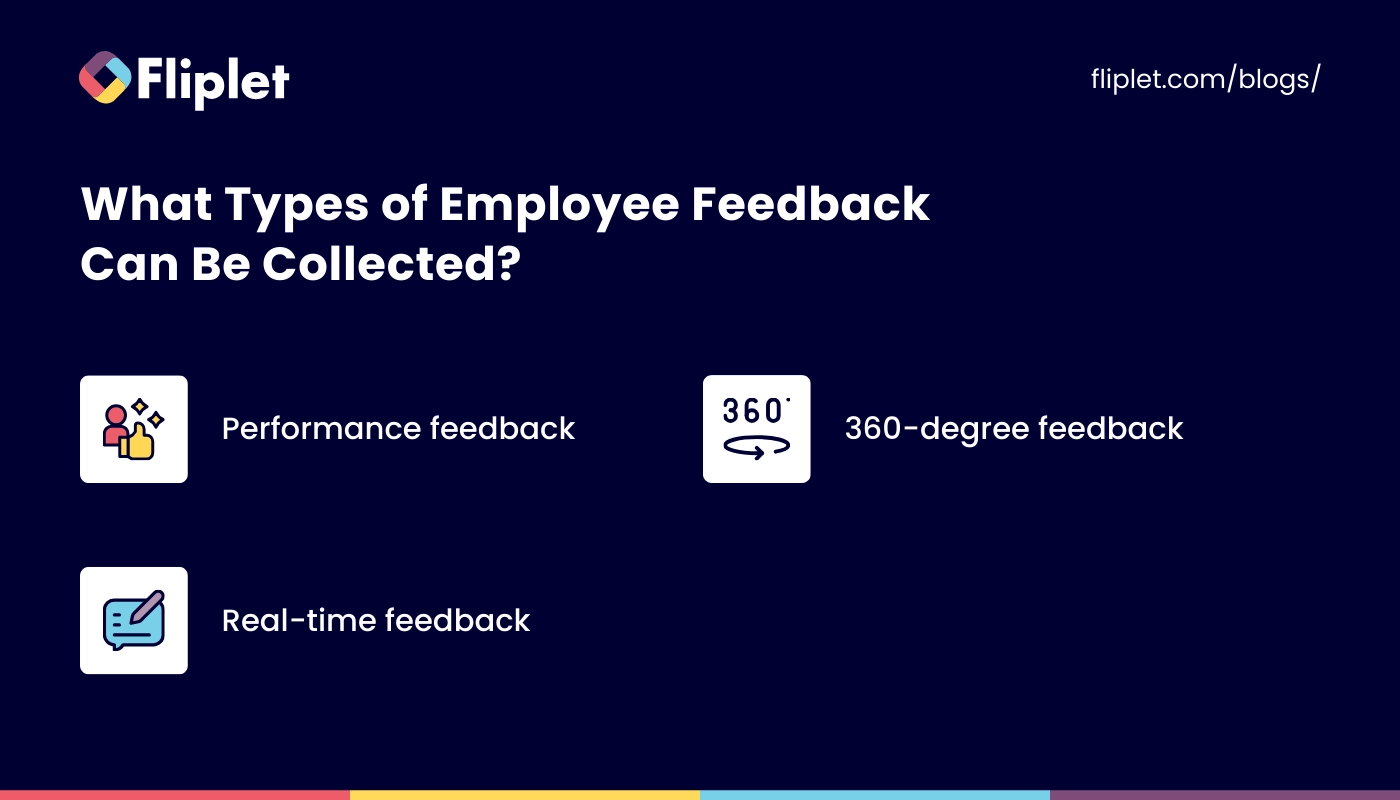
Employee feedback comes in various forms, each serving a unique purpose in the development and maintenance of a productive work environment. These include:
- Performance feedback: Focused on evaluating an employee’s job performance against predetermined standards.
- 360-degree feedback: A comprehensive approach where employees receive feedback from peers, subordinates, and supervisors, providing a well-rounded view of their performance. 360 feedback tools are often required to get this full range of perspective in a single place.
- Real-time feedback: Instant feedback given at the moment, allowing for immediate recognition or correction. Real-time feedback tools give you the chance to catch things in the moment, which can radically improve performance and engagement.
Understanding the different types of feedback helps us tailor our approach to collecting and utilizing this information, ensuring that it serves its intended purpose effectively.
What Is the Importance of Employee Feedback?
The significance of an employee feedback system extends far beyond performance evaluations. It is a vital component of personal growth, team cohesion, and organizational success. Great feedback will:
- Enhance performance: By identifying strengths and areas for improvement, feedback helps employees elevate their performance.
- Promote a culture of open communication: Regular feedback encourages a more transparent and communicative work environment. Having the right communication tools in place is critical for this component.
- Boost employee engagement and retention: Feeling valued and understood can significantly increase job satisfaction and loyalty.
By recognizing the importance of feedback, we can begin to appreciate the role that effective feedback tools play in achieving these benefits.
When to Conduct an Employee Experience Survey?
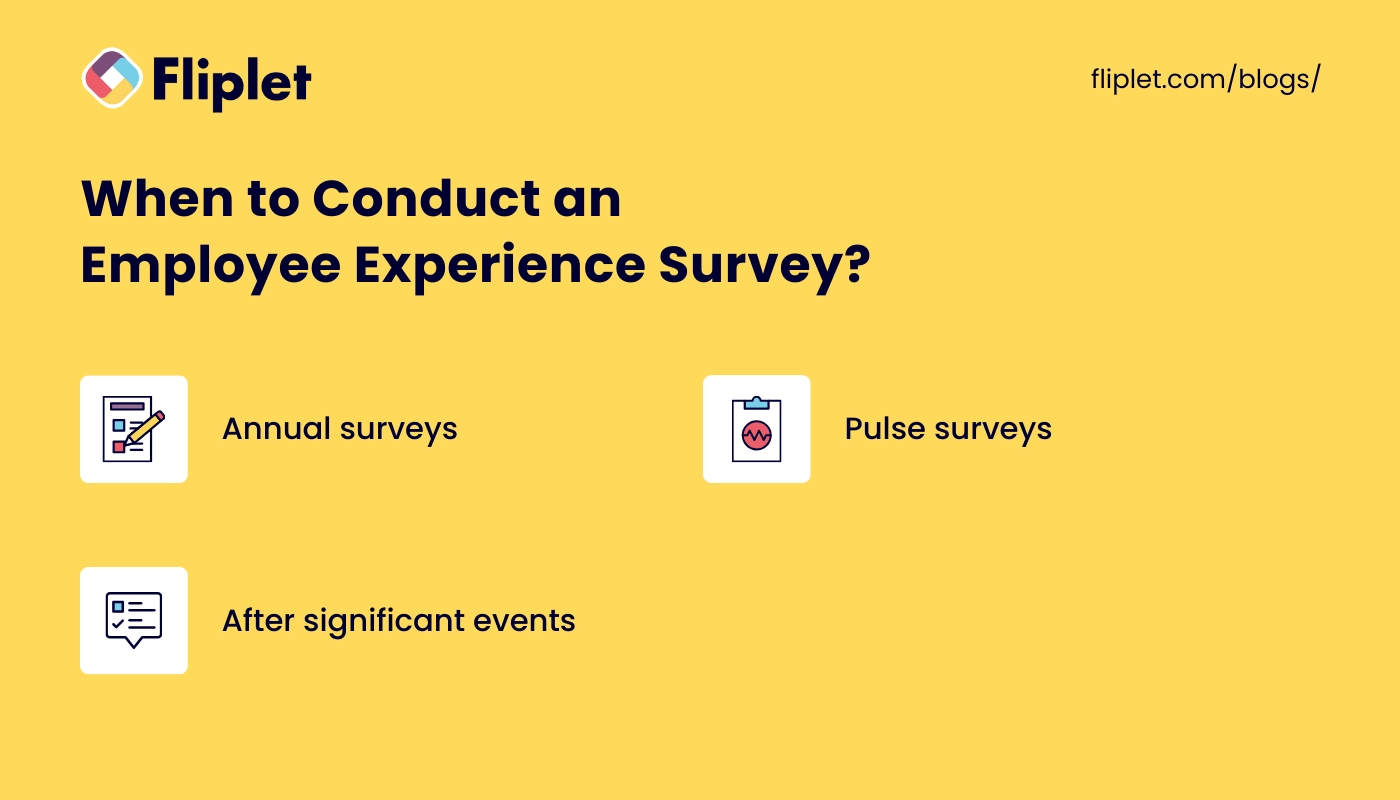
Timing is everything when it comes to collecting meaningful employee feedback. With the right feedback tools already in place, you can feel free to pick your timing at will. The optimal frequency and timing of surveys can vary, but there are a few general guidelines to consider:
- Annual surveys: Provide a comprehensive overview of employee satisfaction and engagement.
- Pulse surveys: Short, frequent surveys that offer real-time insights into team morale and satisfaction.
- After significant events: Collecting feedback following major organizational changes or projects can provide valuable insights into how these events affect employee experience.
Determining the right timing for your surveys ensures that you receive relevant, actionable feedback that can inform your organizational strategies. You’ll also want to make sure that you have employee survey tools that can collect the right information in a secure way.
What are the best ways to collect employee feedback?
Gone are the days of suggestion boxes and annual reviews as the sole methods for gathering employee feedback. Today, we have a plethora of tools at our disposal, designed to make feedback collection more efficient and effective.
So, how to get employee feedback? Some of the best ways to collect feedback include:
- Digital surveys: Utilizing online platforms for anonymous surveys allows employees to share honest feedback without fear of repercussions. This gives you important employee feedback for company insights you can’t get any other way.
- Feedback apps: Mobile applications that facilitate real-time feedback can help capture immediate reactions and suggestions.
- One-on-one meetings: Personalized discussions between employees and their managers can provide deep insights into individual experiences and concerns.
Each method has its advantages, and often, a combination of these approaches will yield the best results in understanding and improving the employee experience.
Top Employee Feedback Tools
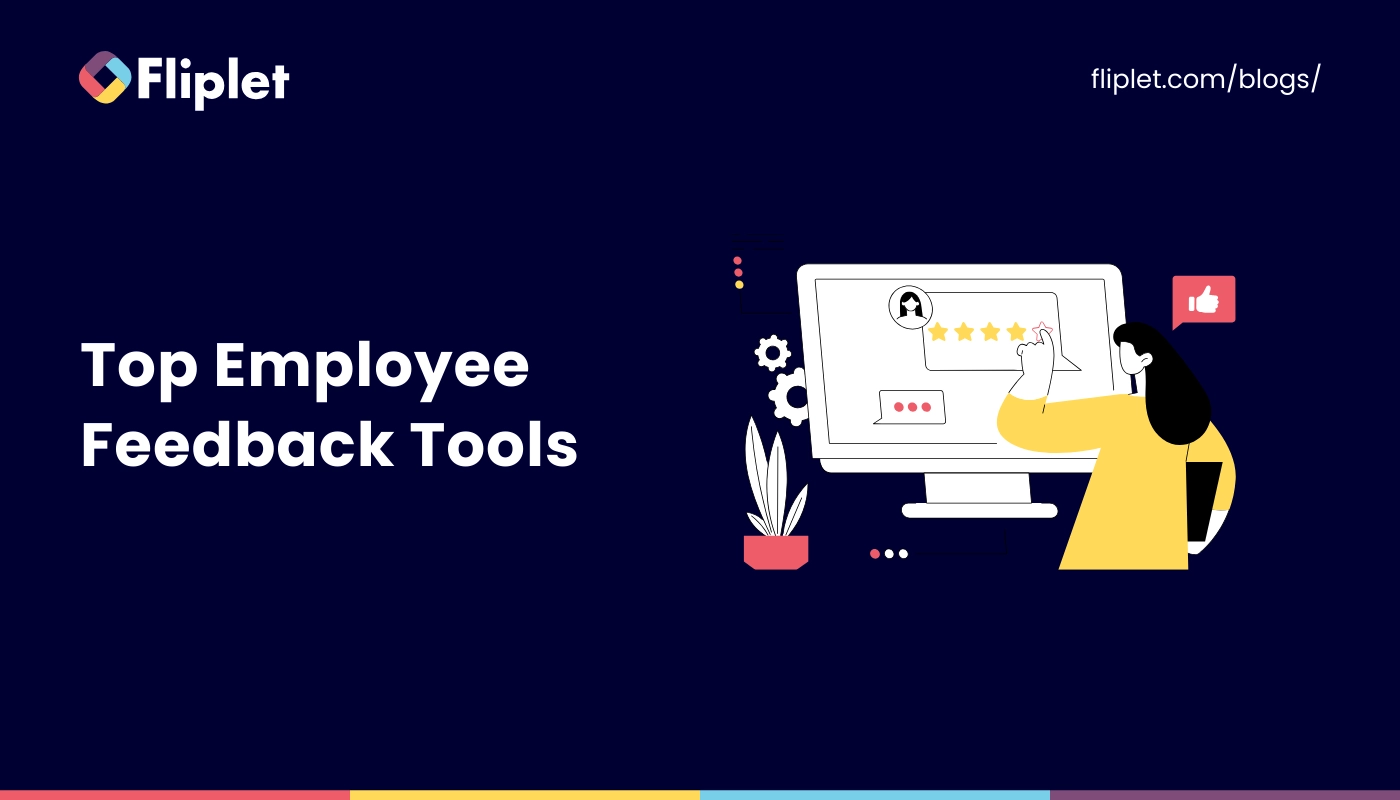
When selecting the ideal employee feedback tool for your organization, it’s essential to consider a variety of options to find one that best fits your needs.
Here’s a comprehensive list of over 15 top employee feedback tools, including key features, advantages, disadvantages, and pricing information where applicable.
1 Fliplet
- Summary: Fliplet offers a flexible platform for creating custom apps, including those for feedback collection, without the need for extensive coding knowledge.
- Key Features:
- Customizable templates
- Real-time feedback collection
- Analytics dashboard
- Advantages: Highly customizable, integrates with existing systems, supports a wide range of use cases beyond feedback
- Disadvantages: May require a learning curve for non-technical users
- Pricing:
- Free employee feedback tools option
- Public: Starting at $9.90 per month
- Custom enterprise pricing
2 SurveyMonkey
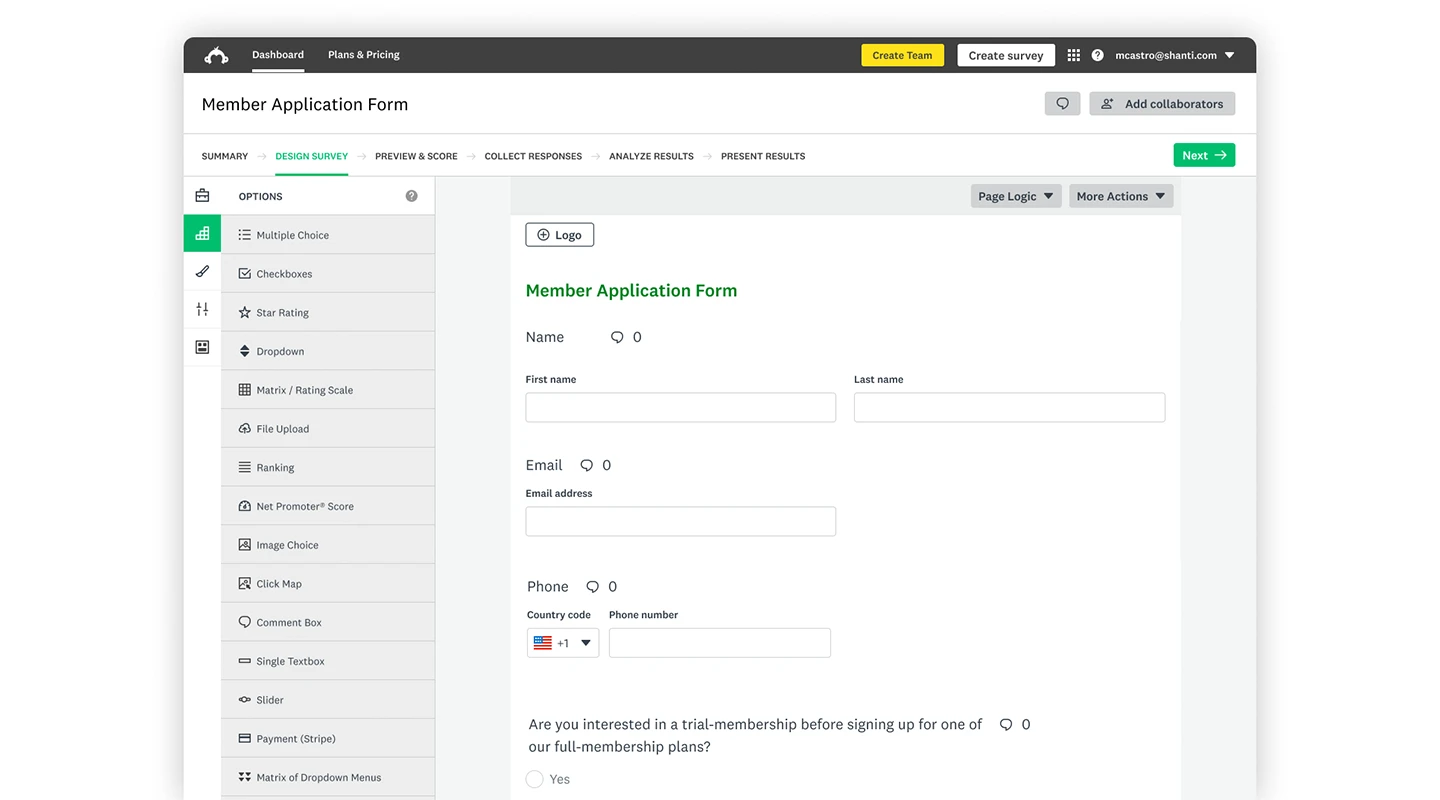
- Summary: A popular online survey tool that enables businesses to create and distribute surveys quickly and easily.
- Key Features:
- Various question types
- Customizable templates
- Robust analytics
- Advantages: User-friendly interface, extensive library of questions and templates
- Disadvantages: Advanced features can be expensive
- Pricing:
- Paid plans start at $25 per person per month and go up from there
3 Officevibe
- Summary: Specializes in employee engagement and feedback, providing a platform for continuous feedback and pulse surveys.
- Key Features:
- Anonymous feedback
- Custom survey questions
- Engagement reports.
- Advantages: Easy to use, focuses on employee well-being, integrates with Slack and Microsoft Teams
- Disadvantages: Limited customization options for surveys
- Pricing:
- Free for basic features
- Essential: $3.50 per person per month
- Pro: $5 per person per month
4 Culture Amp
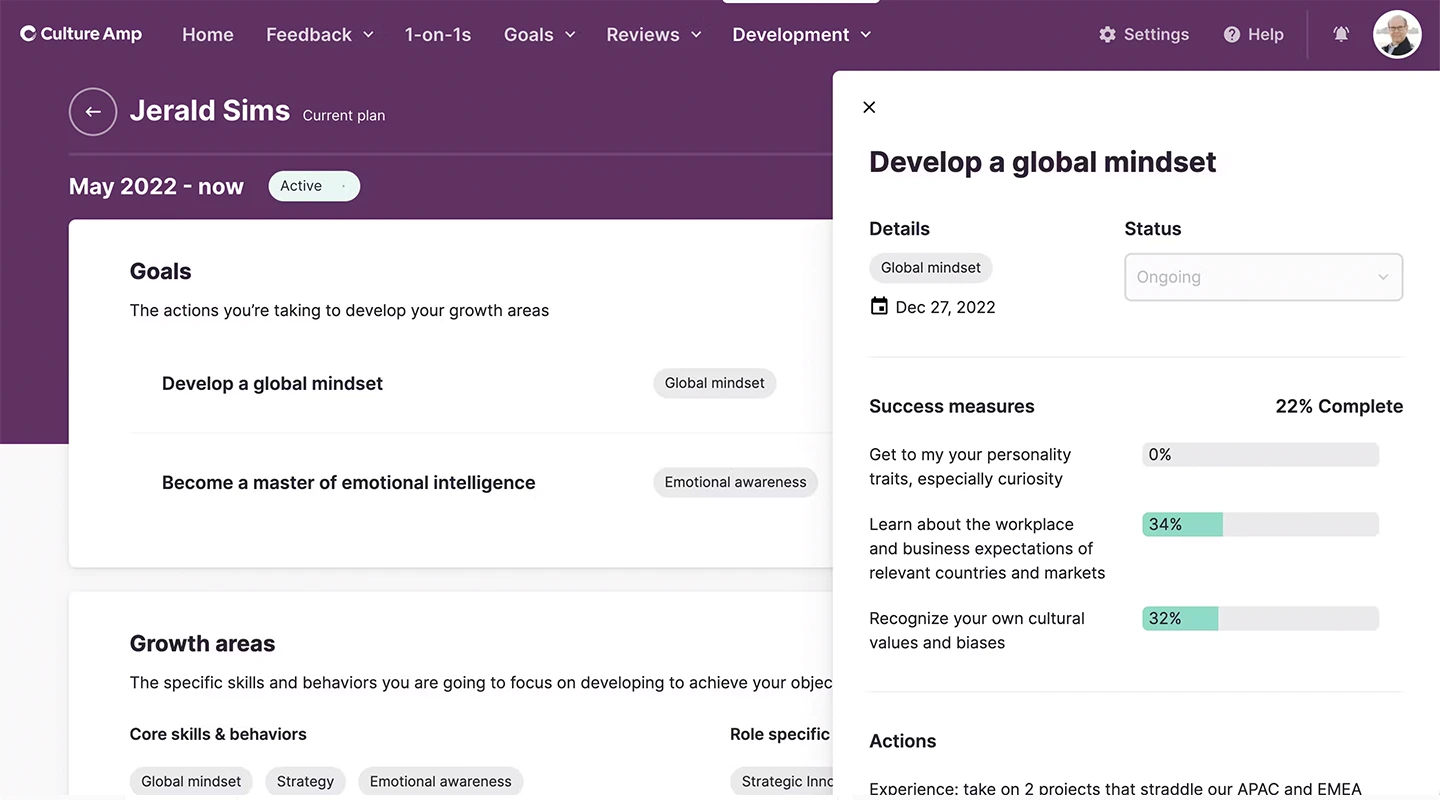
- Summary: A comprehensive platform for employee feedback and performance that offers deep insights into engagement and culture.
- Key Features:
- Benchmarking
- Custom surveys
- Analytics and insights
- Advantages: Extensive data analysis, benchmarking against industry standards
- Disadvantages: Can be costly for small businesses
- Pricing:
- Pricing is based on the number of employees and specific needs — contact Culture Amp for a quote
5 Qualtrics EmployeeXM
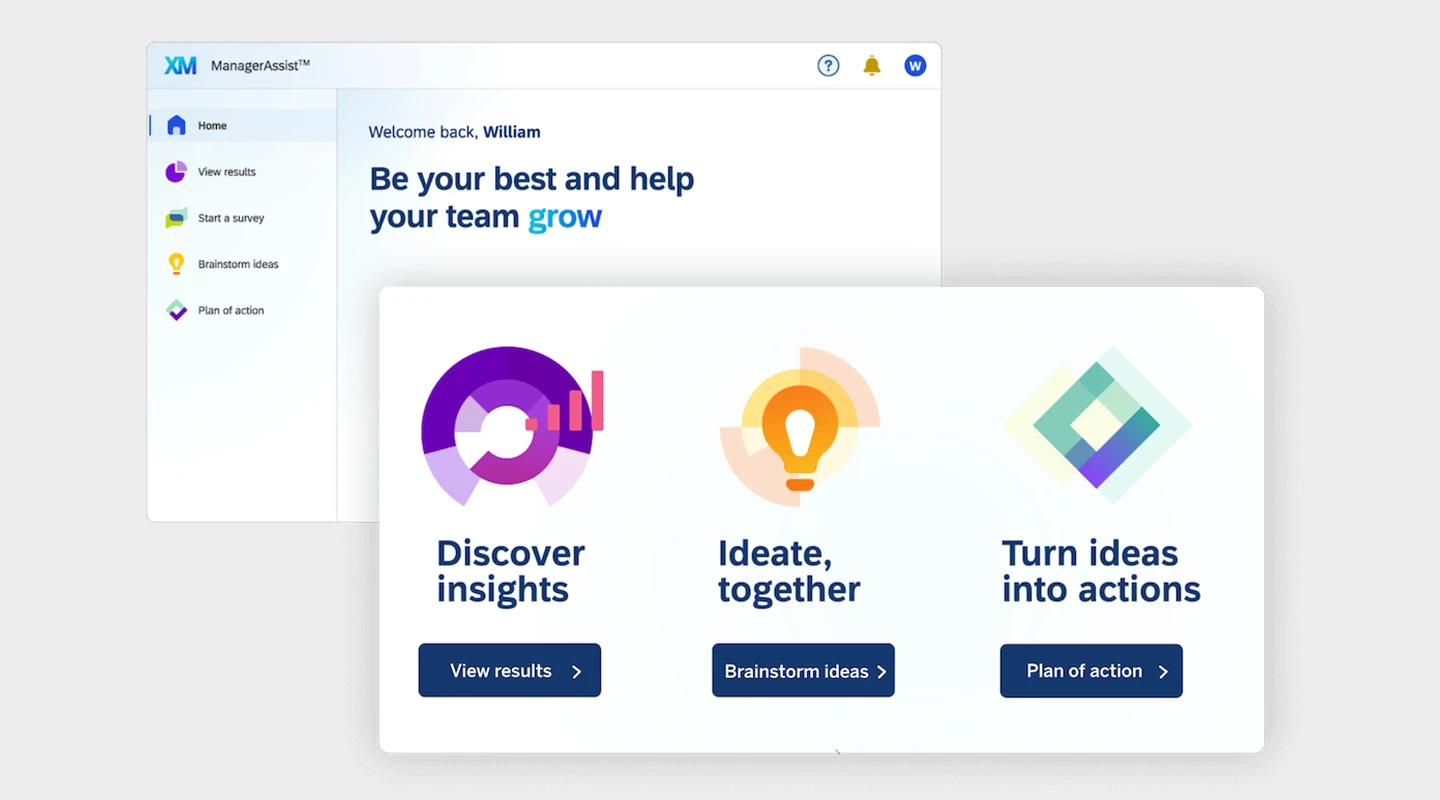
- Summary: Offers a sophisticated platform for experience management, including employee engagement and feedback.
- Key Features:
- Advanced analytics
- AI-driven insights
- Action planning tools
- Advantages: Comprehensive and scalable, powerful analytics capabilities
- Disadvantages: Complexity and cost may not suit smaller organizations
- Pricing:
- Contact for pricing
6 15Five
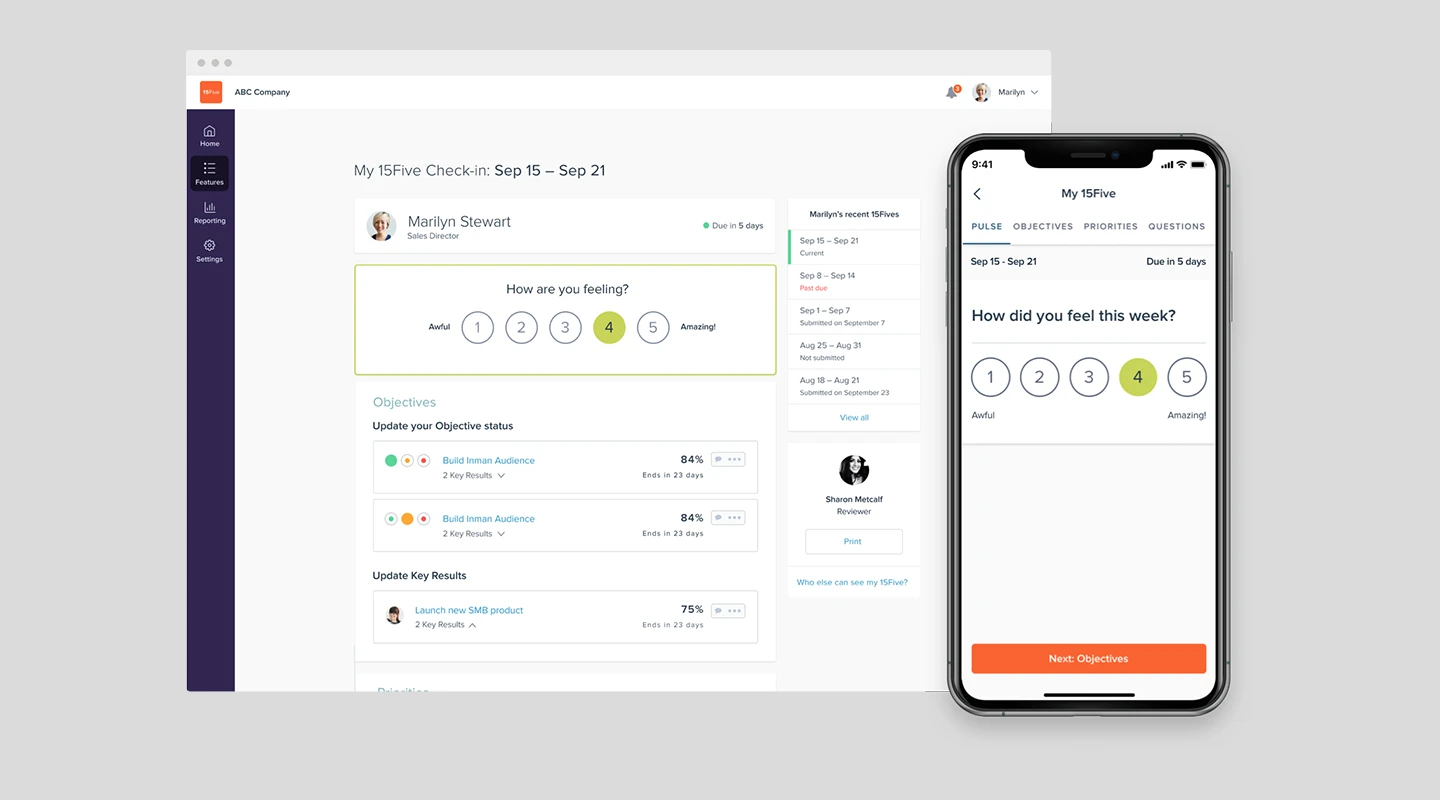
- Summary: Combines performance management, weekly check-ins, and employee feedback into one platform.
- Key Features:
- Continuous feedback
- OKR tracking
- 1-on-1 tools
- Advantages: Enhances communication, supports continuous performance management
- Disadvantages: Pricing can add up for larger teams
- Pricing:
- Engage: $4 per month
- Perform: $10 per month
- Total Platform: $16 per month
7 TinyPulse

- Summary: Offers tools for employee engagement surveys, recognition, and performance tracking.
- Key Features:
- Anonymous feedback
- Cheers for peers
- Performance reviews
- Advantages: Real-time feedback, promotes a positive culture
- Disadvantages: Limited in-depth analytics compared to others
- Pricing:
- Custom pricing available upon request
8 Lattice

- Summary: A people management platform that integrates feedback with performance management and goal setting.
- Key Features:
- 360 reviews
- Real-time feedback
- Goal setting
- Advantages: Integrates feedback with performance management, user-friendly
- Disadvantages: May require additional tools for full HR functionality
- Pricing:
- Engagement: $4 per person per month
- Grow: $8 per person per month
- Compensation: $6 per person per month
- Performance Management + OKRs & Goals: $11 per person per month
9 Glint
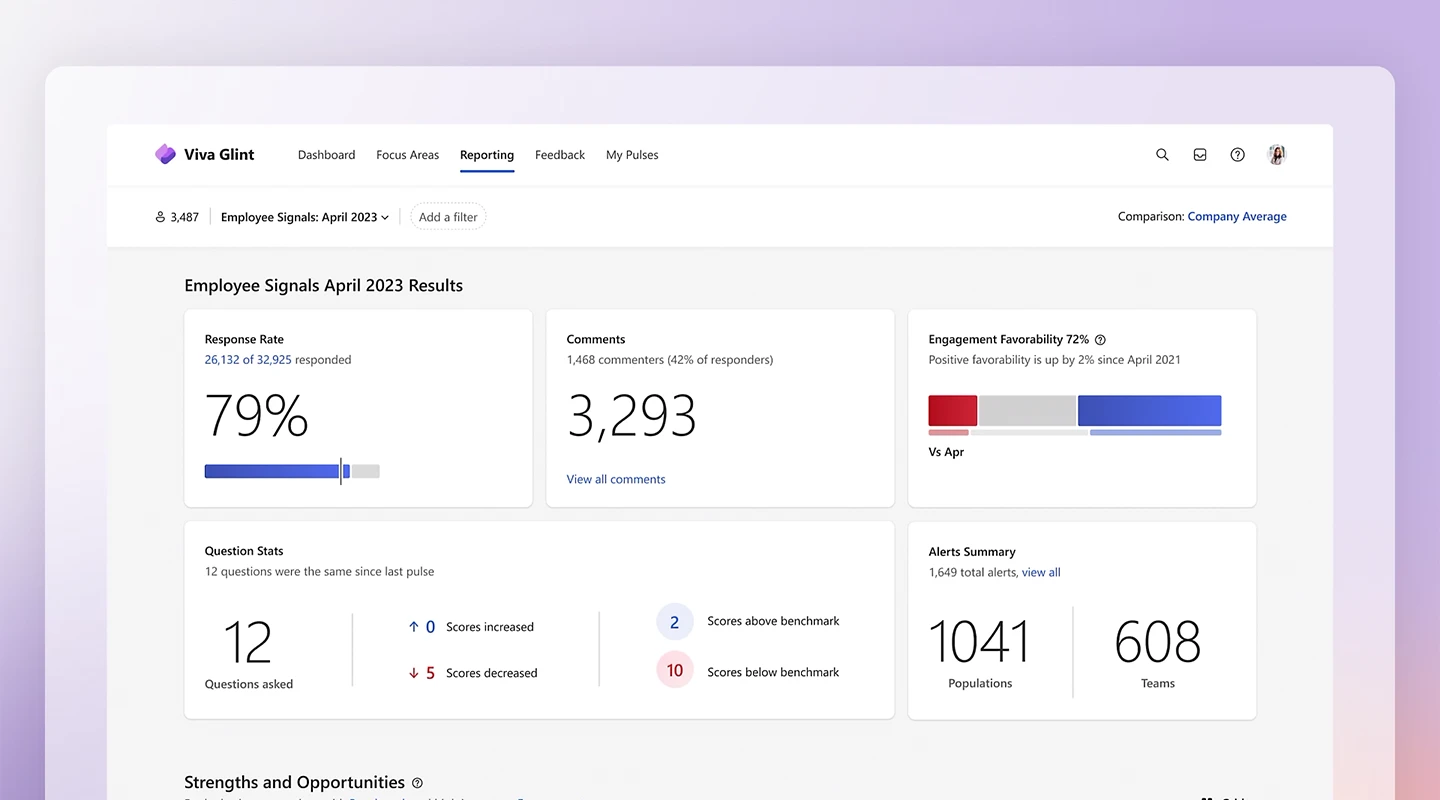
- Summary: Provides real-time feedback mechanisms along with employee engagement and survey tools.
- Key Features:
- Pulse surveys
- AI-driven insights
- Action plans
- Advantages: Real-time insights, integrates with LinkedIn Learning
- Disadvantages: Best suited for medium to large enterprises
- Pricing:
- Included in Microsoft 365
- Employee Communications and Communities: $2 per person per month
- Workplace Analytics and Employee Feedback: $6 per person per month
- Microsoft Viva Suite: $12 per person per month
10 Peakon
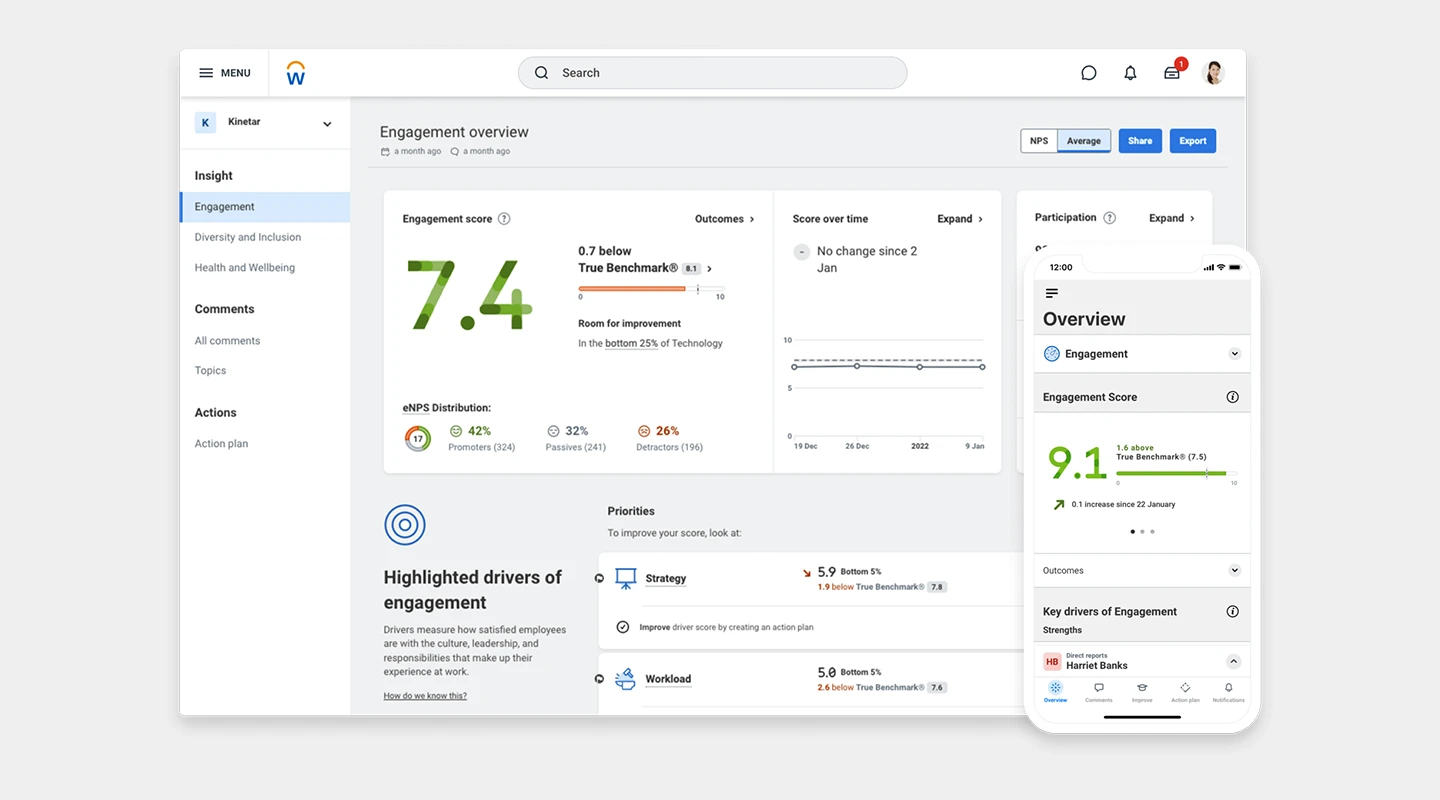
- Summary: A Workday company offering real-time employee engagement and feedback analysis.
- Key Features:
- Heatmaps
- Benchmarking
- Customizable surveys
- Advantages: Deep analytics, integrates with HR systems
- Disadvantages: Pricing may be high for smaller companies
- Pricing:
- Custom pricing available upon request
11 Emplify

- Summary: Focuses on measuring employee engagement through simple yet effective surveys.
- Key Features:
- Quarterly surveys
- Anonymous feedback
- Tailored insights
- Advantages: Actionable insights, dedicated support
- Disadvantages: Less frequent feedback collection
- Pricing:
- Custom pricing available upon request
12 WorkTango
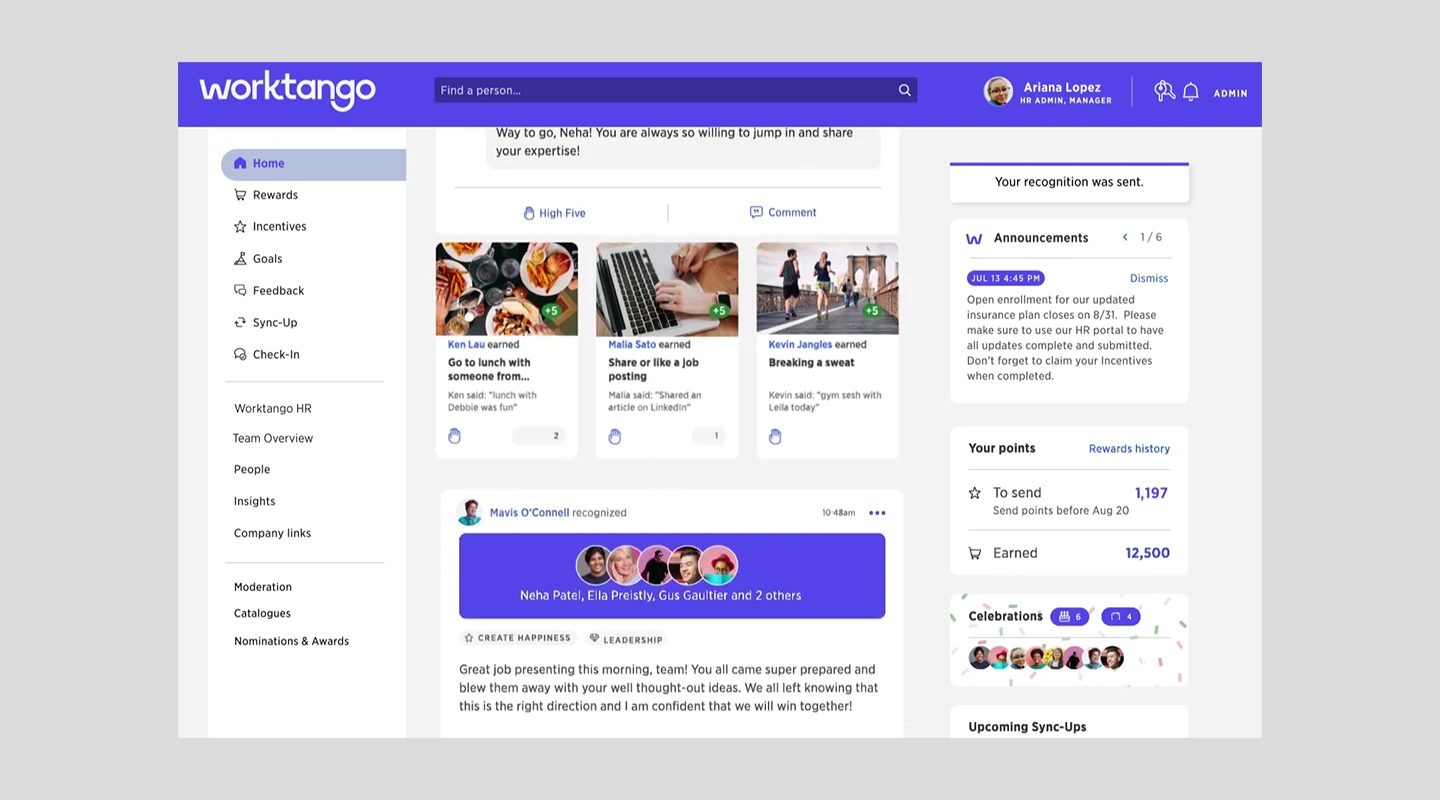
- Summary: An all-in-one employee experience platform that combines recognition, performance management, and feedback.
- Key Features:
- Recognition and rewards
- Feedback
- Performance management
- Advantages: Enhances employee engagement, comprehensive platform
- Disadvantages: May be more than needed for organizations only looking for feedback tools
- Pricing:
- Custom pricing based on needs
- Employee Surveys & Insights: Minimum $8,000 per year
- Recognition & Rewards: Minimum $8,000 per year
- Full employee Experience Platform: Minimum $10,000 per year
13 Engagedly
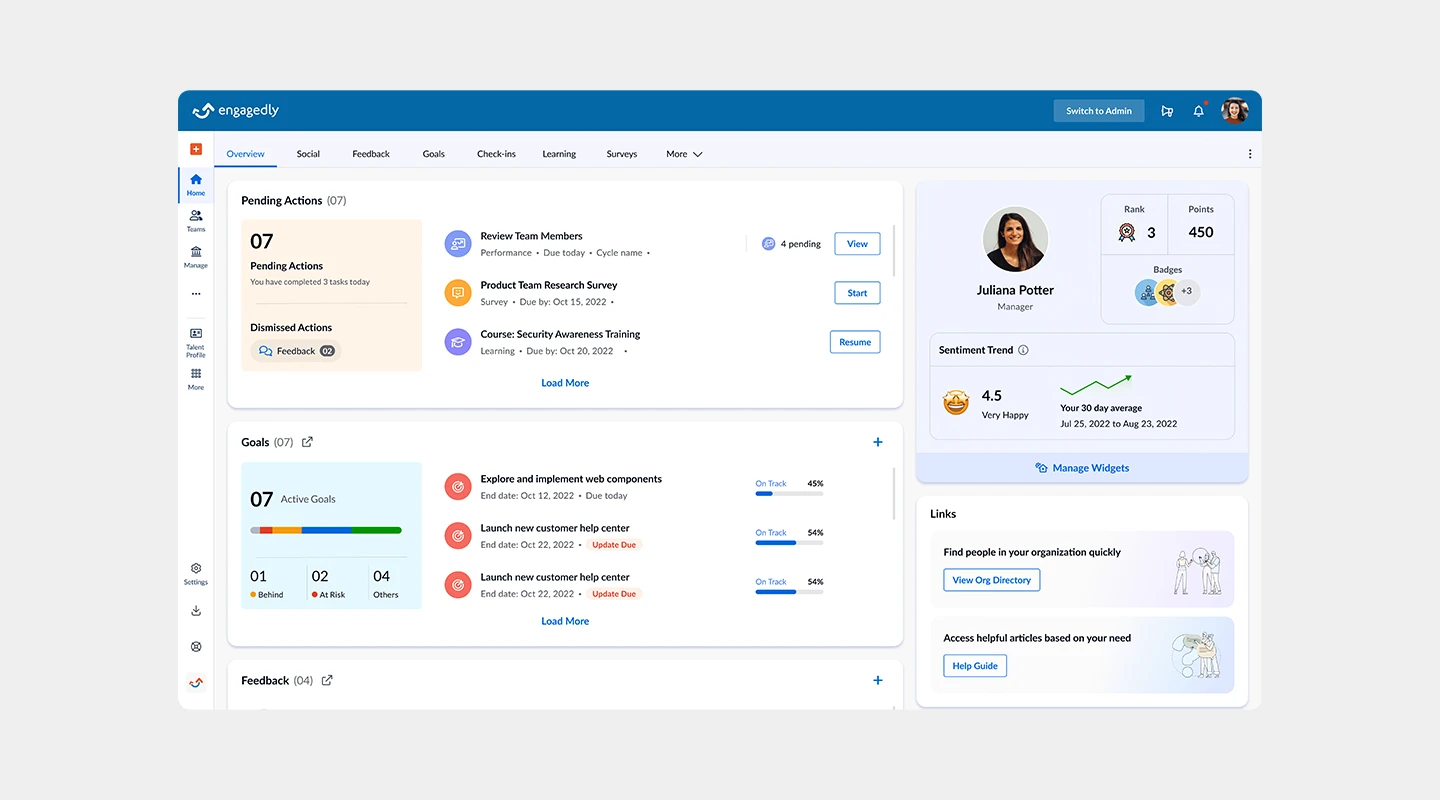
- Summary: A platform for employee performance, engagement, and feedback that encourages a culture of feedback.
- Key Features:
- 360 feedback
- Social praise
- eLearning
- Advantages: Versatile platform, supports learning and development
- Disadvantages: Can be complex to fully implement
- Pricing:
- Base Package starts at $9 per user per month
- Add-ons range from $2 to $5 per use per month
14 Feedbackly

- Summary: A customer and employee feedback tool that focuses on creating seamless feedback loops.
- Key Features:
- Multichannel feedback collection
- Analytics dashboard
- Advantages: Focuses on improving employee and customer experience simultaneously
- Disadvantages: May require integration with other HR tools for comprehensive functionality
- Pricing:
- 14-day free trial
- Monthly plans begin at €249 for 5,000 responses a year
15 BambooHR
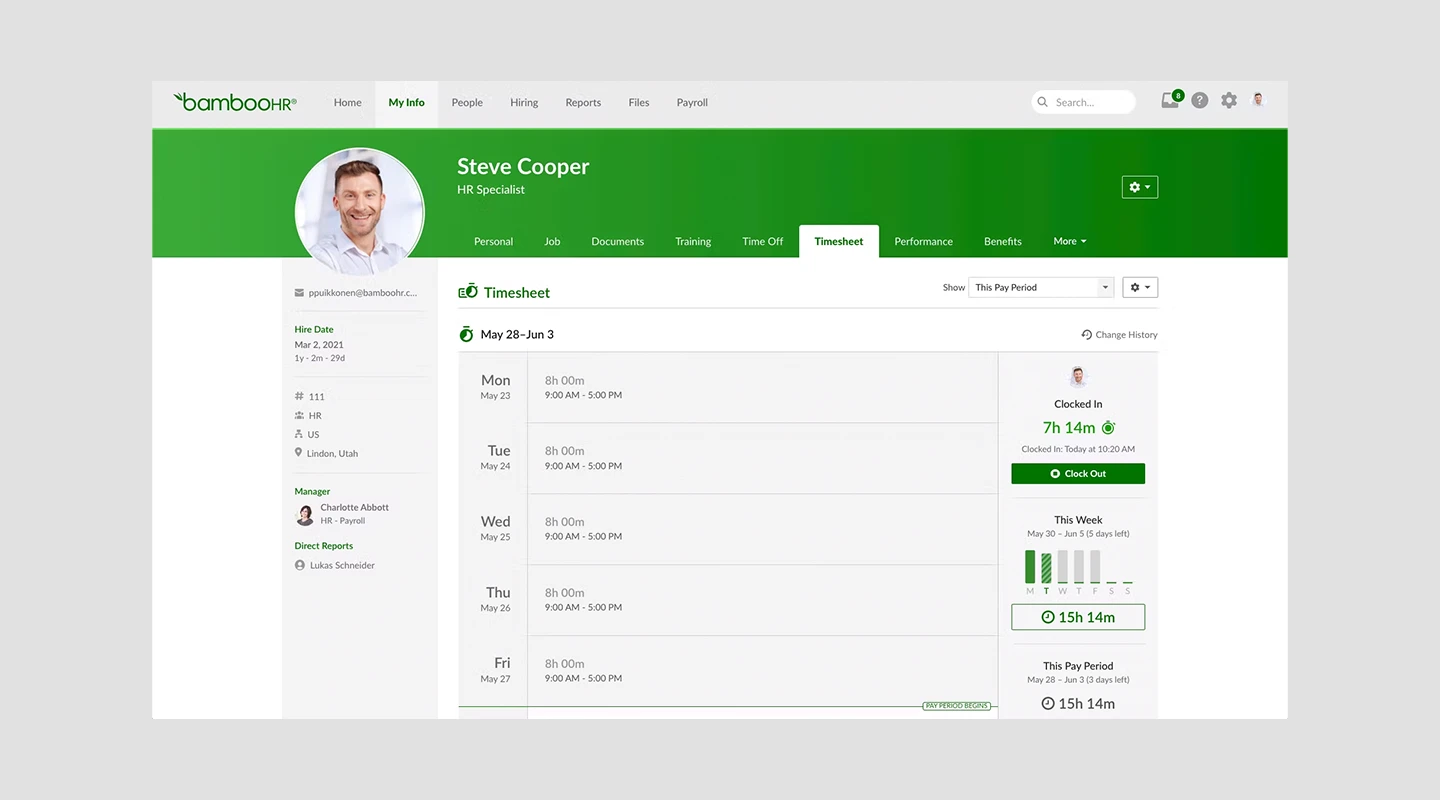
- Summary: While known for its HR management software, BambooHR also offers tools for gathering and acting on employee feedback.
- Key Features:
- Performance management
- Employee satisfaction surveys
- Advantages: Integrated HR platform, user-friendly
- Disadvantages: Feedback tools may not be as comprehensive as standalone platforms
- Pricing:
- Custom pricing based on the number of employees and selected features
16 Zoho People
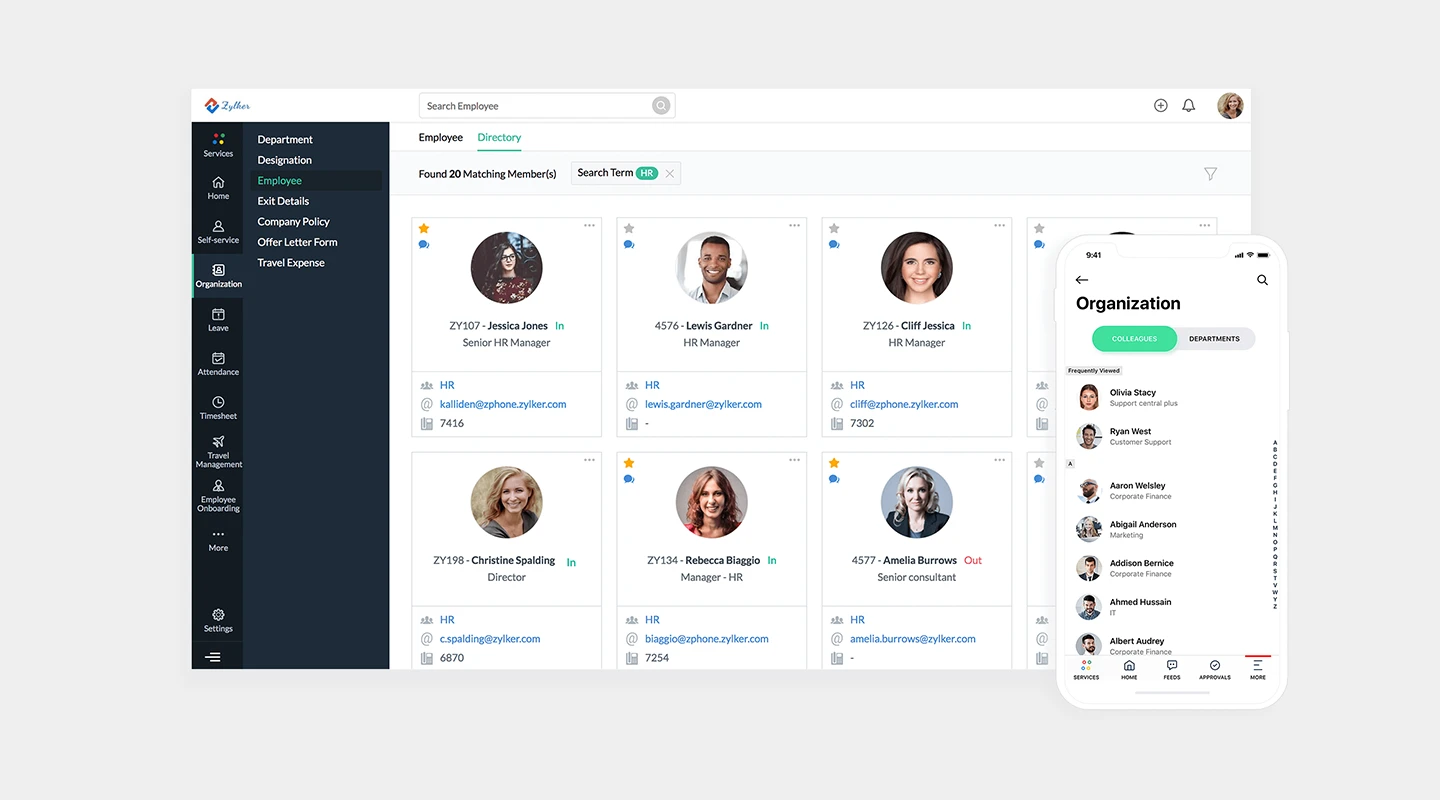
- Summary: Part of the Zoho suite, this tool offers a holistic HR solution with features for collecting and analyzing employee feedback.
- Key Features:
- Feedback management
- Performance reviews
- Analytics
- Advantages: Integrates with other Zoho apps, cost-effective
- Disadvantages: May not offer the depth of feedback-specific features as other dedicated tools
- Pricing:
- Essential HR: $1.25 per person per month
- Professional: $2 per person per month
- Premium: $3 per person per month
- Enterprise: $4.50 per person per month
- People Plus: $9 per person per month
Are there any employee feedback tools free of charge?
While many tools offer a free trial, only Fliplet has an option that’s entirely free.
With their free tier, you can create a web app to receive feedback for up to 28 employees per month. For many organizations, that’s more than enough to get started. Even if they’d like to scale beyond that, having a free way to begin helps build employee feedback tracking into the company and gives them a tool to build on in the future.
Types of Employee Feedback Tools
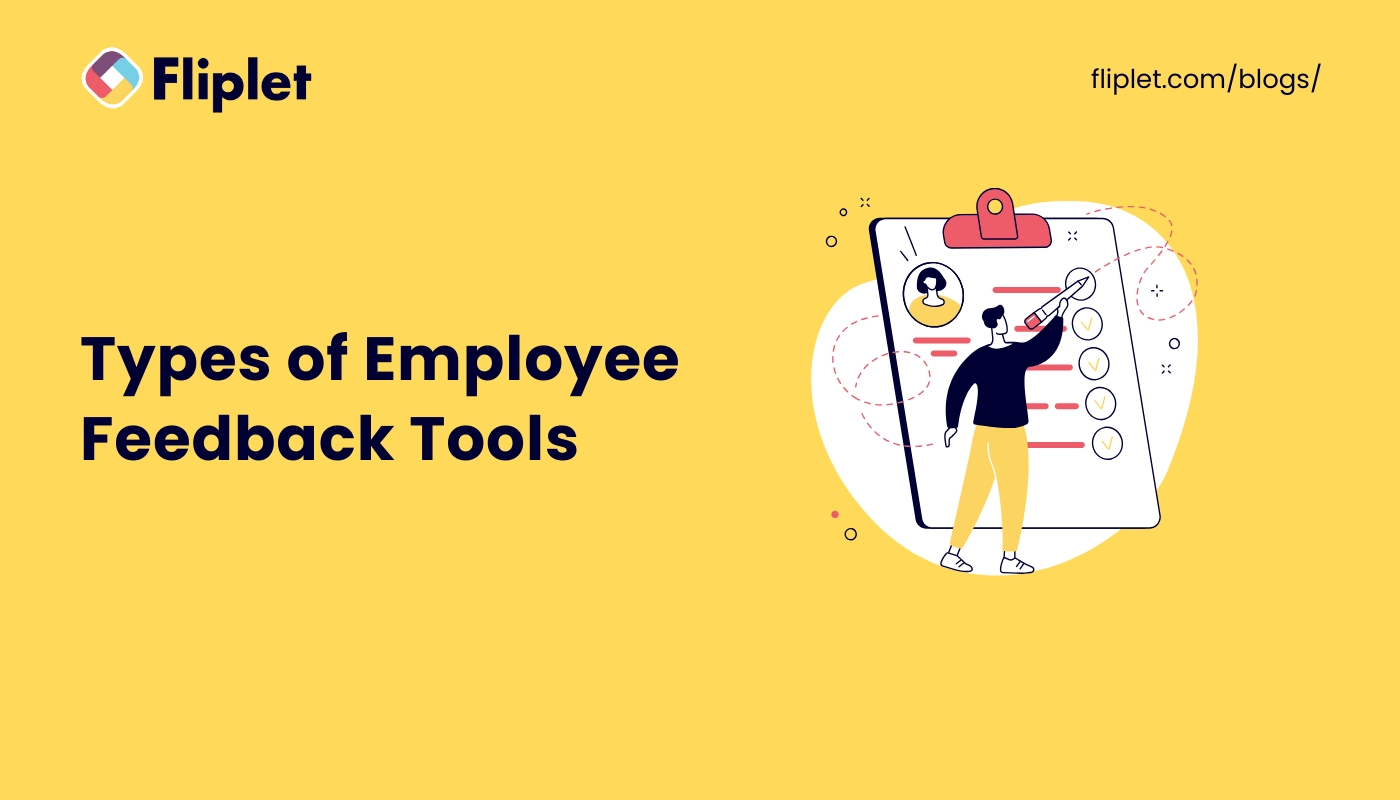
Recognizing the multifaceted nature of feedback, a variety of tools have been developed to cater to different aspects of the organizational ecosystem. These tools range from those focused on individual performance to others designed for team dynamics, each offering unique features to gather, analyze, and act upon the feedback collected.
Performance Feedback Tools
Performance feedback tools are designed to evaluate and enhance individual employee performance within an organization. These tools facilitate regular check-ins, goal setting, and performance appraisals, allowing managers to provide constructive feedback and recognition.
They often include features for setting and tracking objectives and key results (OKRs), performance reviews, and one-on-one meetings. The primary aim is to identify strengths, areas for improvement, and professional development opportunities, fostering a culture of continuous growth and achievement.
Team Feedback Tools
Team feedback tools focus on assessing and improving the dynamics and productivity of a team as a whole. These platforms enable team members and leaders to share insights and feedback on team projects, collaboration, and communication.
Features might include team surveys, project debriefs, and forums for sharing constructive criticism and accolades. By facilitating open and honest dialogue, these tools help teams to address challenges, celebrate successes, and work more effectively together towards common goals.
360 Employee Feedback Tool
The 360 employee feedback tool is a comprehensive approach that gathers feedback for an employee from all directions: their managers, peers, direct reports, and sometimes even clients. This holistic view provides a well-rounded perspective on an individual’s performance, behavior, and interactions within the organization.
It’s particularly valuable for personal development, as it highlights a broad range of perceptions and experiences, allowing employees to understand their impact on others and identify areas for improvement across multiple facets of their work life.
Employee Feedback Survey
Employee feedback surveys are a versatile and straightforward method for gauging employee sentiment, engagement, and satisfaction. These surveys can be customized to collect insights on various aspects of the workplace, including job satisfaction, leadership effectiveness, work-life balance, and company culture.
Surveys can be anonymous to encourage candid responses, helping leaders understand the strengths and weaknesses of their organization from the employees’ perspective. The data collected serves as a foundation for making informed decisions aimed at improving the work environment and employee morale.
How Much Do Employee Feedback Tools Cost?
The price of employee feedback platforms can vary significantly based on the features, scale, and customization options required. Some feedback tools offer free versions with basic functionalities, which can be a great starting point for small businesses or those just beginning to formalize their feedback processes.
For more comprehensive solutions, prices can range from a few dollars per user per month to several thousand dollars annually for enterprise-level services. It’s important to assess the return on investment employee feedback software can offer in terms of improved engagement and performance when considering their cost.
What Is an Employee Feedback App?
Moving beyond traditional employee feedback programs, apps offer a more dynamic and accessible way to gather insights from your team.
An employee feedback app is a mobile application designed specifically for collecting, managing, and responding to feedback directly from employees’ smartphones.
This immediacy and convenience encourage higher participation rates and can provide a more accurate picture of the employee experience in real time.
Why an Employee Feedback App is the best Tool to collect employee feedback?
Apps can be powerful team feedback tools that come with several advantages, making them particularly effective in today’s mobile-first world. These include:
- Ease of access: Employees can provide feedback anytime, anywhere, right from their mobile devices.
- Real-time insights: Immediate feedback allows for quicker responses and resolutions to any issues that arise.
- Increased engagement: The simplicity and convenience of apps can boost participation rates, ensuring a broader range of voices is heard.
- Anonymity options: Many apps offer features to submit feedback anonymously, promoting honesty and transparency.
How to track feedback with an employee feedback app?
Effective feedback tracking is crucial for turning insights into action. The best feedback tools for managers offer dashboard functionalities, where managers and HR professionals can monitor trends, identify areas for improvement, and track the progress of action plans.
These dashboards often include analytics tools to parse the data, making it easier to understand and act upon.
Top Things to Consider When Evaluating Employee Performance Feedback Tools
As you sift through the options, keep the following considerations in mind to ensure you select the best tool for your organization:
- User-friendliness: The tool should be easy for both employees and administrators to use.
- Integration capabilities: It should seamlessly integrate with your existing HR and communication systems. If you are looking for the best 360 feedback tools, you’ll want to be able to seamlessly onboard a range of roles in your company.
- Scalability: The tool must be able to grow with your organization. Any feedback tracker that can’t grow with you isn’t worth investing time and money in.
- Data security: Ensure that the tool complies with data protection regulations and safeguards employee information. Whatever feedback solution you choose, maintaining security for your employees and organization is key.
AI and Apps Will Transform How Employees Receive and Give Feedback
Looking ahead, the integration of AI and mobile apps in the feedback process promises to make it even more efficient and impactful. AI can help analyze large volumes of feedback data to identify patterns and insights that human analysts might miss.
Meanwhile, apps will continue to make tracking feedback more accessible and engaging for employees, fostering a culture of continuous improvement and open dialogue. AI can even provide guidance on how to gather employee feedback in challenging situations
Finding the Best Employee Feedback Apps in 2024
Choosing the right apps to collect employee feedback is crucial for fostering a positive work environment where every employee feels valued and heard. By carefully considering your organization’s specific needs and the features offered by these tools, you can enhance your feedback processes, improve employee engagement, and drive organizational success.
Remember, the goal is not just to collect feedback, but to act on it, creating a better workplace for everyone.
FAQs
How do I collect employees' feedback anonymously?
Collecting info anonymously can be effectively done using feedback tools for employees free of identifying information. Many platforms offer anonymous survey options, ensuring that employees feel safe to share honest feedback without fear of repercussions.
Look for features in feedback tools and employee feedback software that guarantee anonymity, such as anonymous submission forms and feedback trackers that do not track personally identifiable information.
How do you gather staff feedback?
Gathering staff feedback can be approached in multiple ways, but using a combination of employee feedback tools, including employee feedback platforms and employee feedback apps, is highly effective.
These tools allow for the distribution of surveys, polls, and open-ended question forms. Feedback solutions like real-time feedback software and performance feedback tools are also valuable for gathering ongoing insights. For more structured feedback, consider implementing 360 feedback tools or team feedback tools that facilitate comprehensive reviews.
What is the best way to collect feedback?
The best way to collect feedback involves a multi-faceted approach. Utilize a mix of employee survey tools, real-time feedback tools, and face-to-face meetings. The key is to make the process as accessible as possible, which can be achieved by leveraging employee feedback apps and platforms that offer flexibility in how and when feedback is given.
For holistic assessments, best 360 feedback tools provide a well-rounded view by gathering insights from peers, subordinates, and managers.
How do you monitor employee happiness?
Monitoring employee happiness involves regular check-ins and the use of employee feedback systems that can track sentiment over time. Employee feedback for company improvement should be gathered continuously using tools like employee happiness surveys and feedback tracking software.
Real-time employee feedback tools can offer immediate insights into employee morale, while more comprehensive employee feedback programs can provide deeper analysis and trends.
How efficient are AI-Powered employee feedback tools?
AI-Powered employee feedback tools are transforming the efficiency and effectiveness of collecting and analyzing feedback. These tools can automatically analyze large volumes of data, identify patterns, and even predict employee sentiment trends, making them a powerful feedback solution for management.
AI capabilities in feedback tools for employees allow for more personalized feedback experiences and can help managers and HR professionals quickly address concerns and capitalize on strengths. By automating the analysis process, these tools free up time for taking action on feedback, making them an invaluable asset in any employee feedback system.



